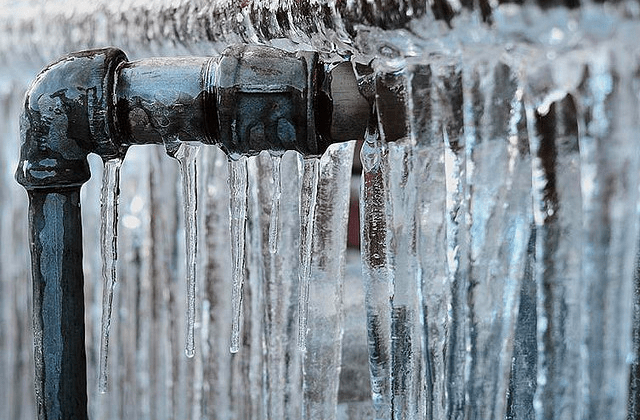Preventing Frozen Plumbing: Best Tips for Winter
Preventing Frozen Plumbing: Best Tips for Winter
Blog Article
Were you trying to find facts around 6 Ways to Prevent Frozen Pipes?

Cold weather can wreak havoc on your pipes, particularly by freezing pipelines. Below's how to avoid it from happening and what to do if it does.
Introduction
As temperatures drop, the risk of frozen pipes increases, potentially leading to pricey repair work and water damage. Comprehending exactly how to stop frozen pipelines is critical for homeowners in cold environments.
Avoidance Tips
Insulating prone pipes
Wrap pipelines in insulation sleeves or use warm tape to secure them from freezing temperatures. Focus on pipelines in unheated or external locations of the home.
Home heating methods
Keep interior rooms properly heated, particularly locations with pipes. Open cabinet doors to enable cozy air to distribute around pipes under sinks.
Just how to recognize icy pipelines
Search for lowered water circulation from taps, uncommon odors or noises from pipes, and visible frost on revealed pipelines.
Long-Term Solutions
Structural adjustments
Consider rerouting pipelines away from exterior walls or unheated locations. Add extra insulation to attics, cellars, and crawl spaces.
Upgrading insulation
Purchase top notch insulation for pipes, attics, and wall surfaces. Proper insulation aids maintain constant temperature levels and decreases the threat of icy pipelines.
Safeguarding Outdoor Pipes
Garden tubes and outside faucets
Separate and drain yard hose pipes prior to wintertime. Install frost-proof spigots or cover exterior faucets with protected caps.
Recognizing Frozen Pipes
What creates pipes to freeze?
Pipelines ice up when exposed to temperatures listed below 32 ° F (0 ° C) for expanded periods. As water inside the pipelines freezes, it expands, putting pressure on the pipeline wall surfaces and possibly causing them to burst.
Risks and damages
Frozen pipelines can lead to water system interruptions, residential or commercial property damage, and expensive repair work. Burst pipes can flooding homes and cause comprehensive structural damages.
Indicators of Frozen Piping
Identifying icy pipes early can avoid them from breaking.
What to Do If Your Pipes Freeze
Immediate activities to take
If you think frozen pipelines, keep taps open up to soothe pressure as the ice melts. Utilize a hairdryer or towels soaked in hot water to thaw pipes gradually.
Final thought
Protecting against icy pipelines calls for proactive measures and quick reactions. By recognizing the causes, indicators, and preventive measures, property owners can shield their pipes throughout cold weather.
5 Ways to Prevent Frozen Pipes
Drain Outdoor Faucets and Disconnect Hoses
First, close the shut-off valve that controls the flow of water in the pipe to your outdoor faucet. Then, head outside to disconnect and drain your hose and open the outdoor faucet to allow the water to completely drain out of the line. Turn off the faucet when done. Finally, head back to the shut-off valve and drain the remaining water inside the pipe into a bucket or container. Additionally, if you have a home irrigation system, you should consider hiring an expert to clear the system of water each year.
Insulate Pipes
One of the best and most cost-effective methods for preventing frozen water pipes is to wrap your pipes with insulation. This is especially important for areas in your home that aren’t exposed to heat, such as an attic. We suggest using foam sleeves, which can typically be found at your local hardware store.
Keep Heat Running at 65
Your pipes are located inside your walls, and the temperature there is much colder than the rest of the house. To prevent your pipes from freezing, The Insurance Information Institute suggests that you keep your home heated to at least 65 degrees, even when traveling. You may want to invest in smart devices that can keep an eye on the temperature in your home while you’re away.
Leave Water Dripping
Moving water — even a small trickle — can prevent ice from forming inside your pipes. When freezing temps are imminent, start a drip of water from all faucets that serve exposed pipes. Leaving a few faucets running will also help relieve pressure inside the pipes and help prevent a rupture if the water inside freezes.
Open Cupboard Doors
Warm your kitchen and bathroom pipes by opening cupboards and vanities. You should also leave your interior doors ajar to help warm air circulate evenly throughout your home.

I discovered that write up about Winter Plumbing Precautions: Preventing Frozen Pipes when doing a lookup on the web. Enjoyed our piece? Please share it. Help other people find it. We value your readership.
Explore Now Report this page